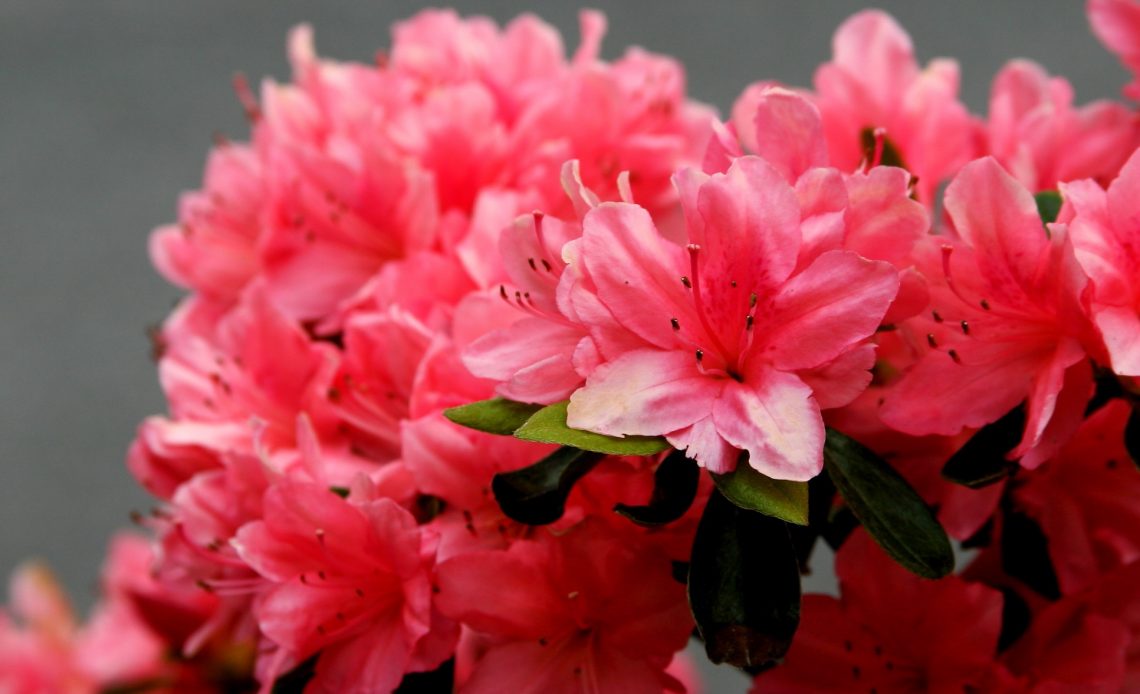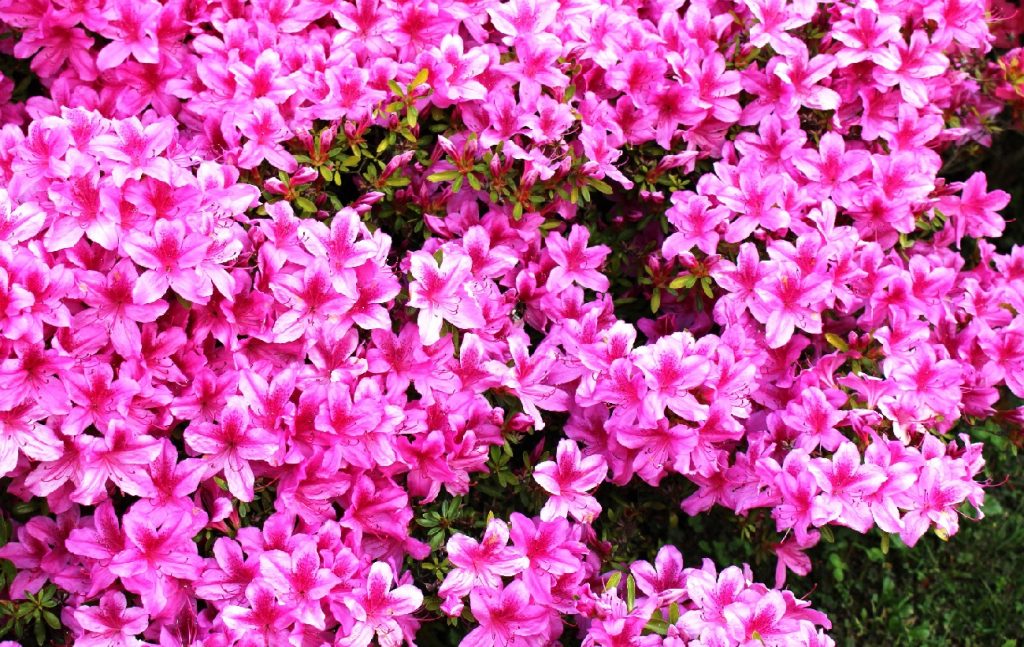

We’re here to help! Wild Yards is a completely free website that is 100% dedicated to helping you create a wildlife-friendly, sustainable yard. Read more
WildYards is reader-supported. When you buy a product through a link on our site, we may earn a comission. Every product is independently selected by our (obsessive) editors and our reviews are unbiased and objective. Read more about our mission or our privacy policy.
Deer will famously wander into gardens searching for a quick snack or two. For many of us, that means we can expect some of our favorite flowers and vegetables to get eaten up. But what about our bushes and shrubs – do deer eat azaleas, for example?
Deer love eating azaleas. They’re regarded as some of the most ‘at-risk’ plants in any garden that welcomes deer visitors. While azaleas may not be the best plants for the deer’s diet, any that you attract to your garden will likely munch on these crops first, if available.
Why do deer like azaleas so much?
Azaleas are likely to be popular with deer as they are fairly plain and simple, at least in terms of structure and flavor. Deer have infamously complex and sensitive digestive systems, which means they frequently seek out soft, smooth flowers and plants they can easily swallow and process.
It’s actually easier to determine which plants deer choose to avoid – unlike the azalea, a plant that’s prickly, fuzzy or rough, or carries a strong aroma or taste, is likely to turn these creatures away. For example, deer won’t ever show much interest in ferns, okra, or dahlias unless they are absolutely desperate.
The azalea, however, is often available in plentiful supply thanks to the bush structure in which it propagates. Not all varieties of azalea will shoot up quickly, with the base plant typically taking up to three years to reach full maturity. Conversely, there are some hybrid azaleas, such as kurume azaleas, which will spring up faster than most – meaning local deer can expect a reliable feeding ground.
Azaleas are also famously easy to grow provided that their soil is rich in nutrients and they receive regular watering. Deer can therefore expect to find azaleas growing in poorly-tended garden areas, making it a common treat.
Additionally, not all deer – or species of deer – have the same tastes. While deer have complex ruminant digestive systems, some individual animals may simply develop tastes for azaleas based on what they’ve previously tasted in the local area. In any case, it’s never a good idea to take any chances on growing azaleas near deer habitats – unless you want to feed them.
On that note, be careful when feeding deer (intentionally or not) – it’s illegal to feed them at all in some states. Check your local legislation before growing azaleas.

Are azaleas good for deer?
Deer appear to like azaleas for their taste and texture, as the plants are technically toxic if swallowed in large amounts. While there is negligible information available regarding the azalea’s effect on the deer’s system period, it is a famously poisonous growth that can kill if fully ingested.
With this in mind, if you are growing azaleas and want to welcome deer to your yard, there are safer, less problematic plants you may wish to plant instead. Hydrangeas and impatiens, for example, all prove equally tasty for your deer visitors and typically won’t harm them if eaten regularly.
It may be more beneficial to grow some of their favorite vegetables – such as sweet potatoes – if you want to be especially careful with how you feed your local wildlife.
How can I protect my azaleas from visiting deer?
One of the quickest and easiest ways to prevent deer from visiting your azaleas is simply to set up distractions in the shape of noise or light they won’t expect. For example, something as simple as a wind chime can prove highly distressing for deer if they don’t expect to hear them playing in strong weather. The same applies to motion lighting, or light beamed off reflective surfaces. Be sure to set these elements up towards the edge of your yard or where your azaleas are likely to be most under hungry visitor threat.
Here are a few more azalea-protecting ideas you may wish to try.
Set up taller fencing
If you’re intent on growing azalea bushes towards the far end of your lawn or yard, make sure to increase the height of your fence, gate, or perimeter. Eight feet or taller will likely be enough to deter local deer from visiting, as they likely won’t leap over without knowing what lies on the other side. This is a preventative measure more than a cure, as you may not stop some high-leaping deer from revisiting if they know you grow azaleas.
Move your azaleas
As much as it’s nice to watch azaleas from afar, to protect them from deer, it may be worth taking cuttings or even replanting altogether. The closer you grow these flowers to your home, the less likely it will be that deer will eat them.
Deer will either flee or fight at the sight of a potential predator – which, regardless of your intentions, may well be you! Position your azalea bushes near windows where you can see them – this has the dual effect of surprising away deer if they see movement or a shadow.
Try deterrent sprays
We don’t always recommend deterrent sprays here at Wild Yards, as you never know for sure which mixtures may harm other animals and plants in your garden. Therefore, you should choose as organic a compound as possible – avoid investing in foul chemicals, for example. You may find some deer deterrent spray made from natural urine extract, but this can be a deterrent to other animals, too.
Mix in flowers deer dislike
There are no true ‘deer deterrent’ flowers or plants out there, but there are some growths they will pass up in favor of others. Consider growing plants with thorns, prickles, or strong scents to ward away deer interest.
Some vegetables, too, can repel deer if planted in a strong enough supply. For example, did you know that most deer will turn their noses up at cucumber? You may also wish to grow your grass long to distract your deer, though there may be a risk of them bedding down if there are too many tasty plants close by.
Are azaleas worth growing?
Yes! Regardless of your local deer showing interest, azaleas are delightful plants that add a delicate touch of color and elegance to any garden. What’s more, they are fantastic pollinator magnets.
Bees, for example, will normally flock towards azaleas, even if they are pinkish in hue – most bees can’t see red properly, meaning they have to rely on scent receptors. Azaleas also prove highly popular with the majority of butterflies, particularly thanks to the fact they are easy to feed on.
Animals much smaller than deer – such as the hummingbird, and a variety of insects – will also visit azaleas in their droves. You can always expect a lot of competition over nectar around these bushes – making them ideal for any gardeners seeking to create their own wild paradises.
Azaleas will certainly attract deer most of all – meaning that if you are particularly protective of your bushes, it’s worth taking steps to humanely deter this wildlife. Otherwise, simply make sure it’s legal to feed deer in your state – and be sure to grow the flowers somewhere in your garden where visitors can’t cause too much damage or disruption.
